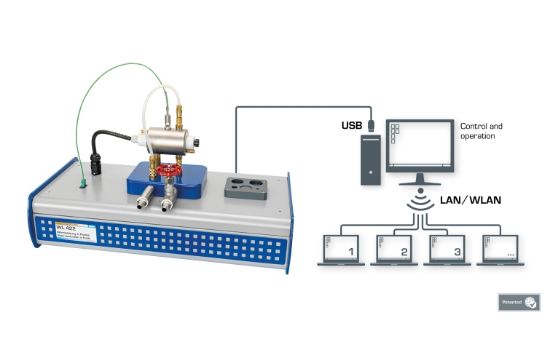GUNT Heat conduction is one of the three basic forms of heat transfer. According to the second law of thermodynamics, heat always transfers from a higher to a lower energy level. This GUNT training unit enables targeted teaching and experimentation on heat conduction in fluids, emphasizing the fundamental differences between gases and liquids.
Product Features
- Experimental setup focuses on heat conduction through fluids, including water, oil, air, and carbon dioxide
- Core structure includes an electrically heated inner cylinder and a water-cooled outer cylinder
- Concentric annular gap between cylinders ensures controlled heat transfer and minimizes convective effects
- Narrow annular gap allows large pass-through area with homogeneous temperature distribution
- Temperature sensors located inside and outside the annular gap for precise thermal readings
- Microprocessor-based instrumentation housed securely within the unit
- GUNT software package includes operation system, data acquisition tools, and educational software with illustrations and explanations
- PC-based control via USB interface (PC not included)
- Multi-user access via LAN/WLAN possible with single software license
Benefits
- Enables precise measurement of thermal conductivity in both gases and liquids
- Minimizes convection, ensuring isolated study of heat conduction
- Provides hands-on learning and clear visualization of theoretical heat transfer concepts
- Software support enhances understanding with guided instruction and real-time data analysis
- Network compatibility allows collaborative learning in lab or remote environments
Why Choose the GUNT Heat Transfer Experiment in Fluids?
The GUNT heat conduction trainer in fluids is specifically designed for studying thermal conduction across various liquid and gas mediums. Its advanced dual-cylinder setup and real-time measurement capability provide clear insights into the behavior of fluids under heat transfer. With educational software and USB-based PC control, it’s an ideal solution for modern engineering education and thermal physics research.

